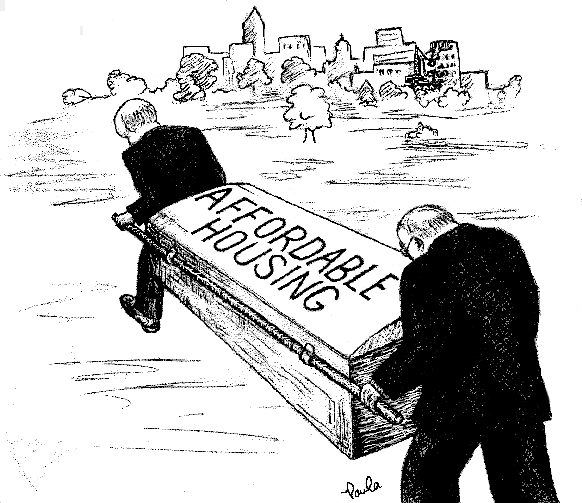Housing: Solutions vs. Palliatives

Image source: Arise for Social Justice
Two major reasons for the destructive inflation besetting our City are being effectively ignored. First, San Francisco properties have become pawns in the global economy. We are a piggy bank for cheap, mostly offshore speculative money. Secondly, the city has pushed beyond its holding capacity for infrastructure and geotechnical risks. This raises costs and reduces sustainability.
How can the leadership of this City meaningfully address these problems?
So far, what’s been proposed are mostly palliatives and placebos: requiring a higher percentage of inclusionary housing (over 25% vs. 12%) and giving density (and height) bonuses for building additional affordable units. The gains from inclusionary housing targets are paltry, inflationary, & often not even being built. Increasing supply of primarily midrise to high-rise housing benefits mostly affluent tenants and buyers and furthers the inexorable upward push of inflation.
Planning policies also ignore, at peril to our population, fundamental seismic and climatic constraints to growth and the need to improve the safety of existing structures.
The city cannot continue to grant cheap paper rights to build in some politically promised future. We urgently need to go deeper and address both “bad” money and safety/sustainability issues:
Limitations on offshore speculative money. San Francisco, together with other highly impacted cities, should propose and support State and Federal regulation of offshore money and financial derivatives based on U.S government loans to overseas investors.Credible planning based on holding capacity. We cannot build ever upward on our seismically active land and our ocean and bay surroundings without a great burden of future costs and loss of life.
Taxes to put brakes on land costs. There should a speculative value tax on any land costs that exceed the normal proportion of land to development costs.
Public Development Corporation. The County, as an administrative district of the state, should create a public development corporation to act as a preservation and development partner to private enterprise using the Local Agency Formation Commission process. Projects would be those meeting public needs as defined through Planning.
Expansion of public ownership of land. Projects using substantial public resources should not get free rides. San Francisco should make aggressive and appropriate use of ground rents or proportionate revenues from public investments.
We have the tools to leverage and moderate market forces. And to retrofit and build a safe city. There is no “free market” just as there is no free lunch or invisible hand. The need is now and it is urgent to change our ways or to change our leadership.
— Bernard Choden


Does the remedy given increase or decrease the building of affordable housing? You would stop overseas investment; tax excessive land values; setup PDCs, public development corps, to partner with private developers; and expand city ownership of housing. What would this cost the city, or would it be self-financing?